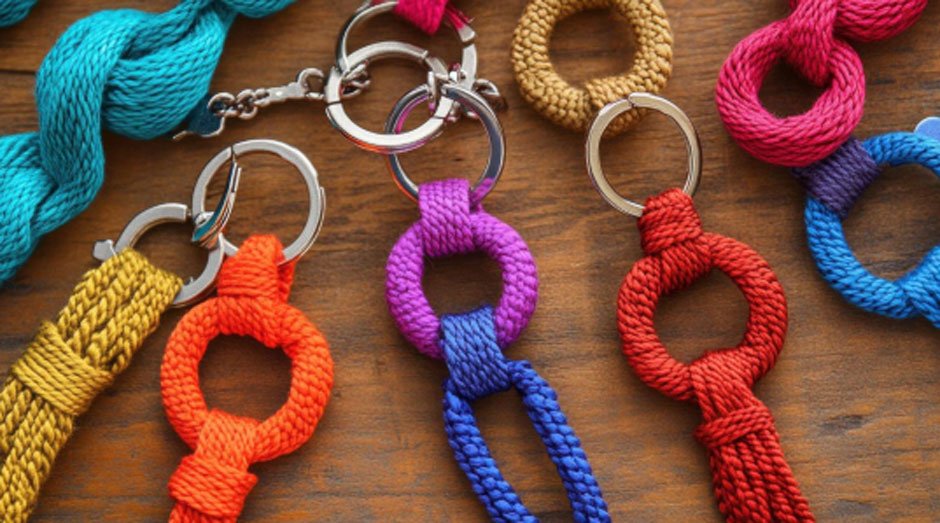 Moving away from plastic-heavy accessories is a sign of being a conscious consumer. The shift towards handcrafted, eco-friendly keychain feels like a more ethical choice. So, your eco friendly keychain not only holds your keys; they have the whole set of values that support this purchase.
Moving away from plastic-heavy accessories is a sign of being a conscious consumer. The shift towards handcrafted, eco-friendly keychain feels like a more ethical choice. So, your eco friendly keychain not only holds your keys; they have the whole set of values that support this purchase.
For small brands, artisans, or DIY enthusiasts, sustainable keychains should begin with selecting the right eco friendly keychain materials and manufacturing practices. The following is a handy guide to creating keychains that are as beautiful as the environment.
Why Are Eco-Friendly Keychain Important
Keychains are our daily items, so they are often treated as a commodity. But when they get associated with the environment, they become a significant issue. Mostly, the keychains you purchase in bulk are made from synthetic plastic, chemically enhanced leather, or metal, with no potential for recycling. It will also end up as waste dumped in landfills along with the other resources that helped create each one.
What if we told you there was a product made from something that isn’t damaging to the environment, is reused, repurposed, and upcycled with minimal impact production? There is a way to lower the carbon footprint of a product without sacrificing its trendiness and longevity.
Best Eco-Friendly Keychain Materials
1. Natural Fibers
Sustainable textiles are the building blocks of a truly environmentally friendly keychain.
Organic Cotton: A biodegradable option free of pesticides. Search for products that are GOTS (Global Organic Textile Standard) certified to ensure sustainability.
Hemp: It’s a highly sustainable and durable fibrous material, naturally antimicrobial, which is excellent for a woven or braided keychain.
Bamboo Fiber: Soft, plant-derived, fast-growing. Hand-sewn would be ideal for the bamboo fabrics.
Linen or Flax: Water-efficient and compostable linen adds a rustic aesthetic to keychain backings.
2. Recycled Materials
Up-cycling with post-consumer materials not only reduces landfill waste but also offers a much-needed alternative use.
Recycled Polyester (rPET): rPET is highly resistant to breakage and has superior color characteristics, making it suitable for use as embroidery thread or backing for multiple purposes. rPET is made using recycled plastic bottles.
Recycled nylon: Several brands upcycle old fishing nets and scraps of fabric into high-performance nylon (like ECONYL!), so you can sew up that keychain (and with much satisfaction, too)—it’s going to last you for years, no problem.
Metal Hardware: Allow yourself to be creative with the hardware and find key rings and clasps made from recycled brass or aluminum from certified green suppliers.
3. Eco-Friendly Leather Replacements
Leather, as it’s currently produced , is hardy, but it’s ecologically costly. Some examples:
4. Vegetable-Tanned Leather:
The method of tanning that uses only natural materials, like plant matter, instead of toxic chromium.
5. Cork leather:
A vegan and sustainable material that is soft and scratch-resistant.
Pinatex is made from pineapple leaves and provides a robust and aesthetically pleasing leather alternative.
Sustainable Manufacturing Tips
Using the right keychain materials is just the first step; how your product is made matters just as much.
1. Source Responsibly
Contact the certified suppliers to verify their authenticity. You can request a GOTS (for textiles) and a Global Recycled Standard (GRS) certificate for recycled content. These are third-party certifications, but they can help you find ethical and sustainable practices.
2. Make Use of Strong Stitching Methods
Durability reduces waste. Whether you are ready to start working on beautiful and functional fabric keychains, consider using modern, high-quality threads like pearl cotton or hemp for a long-lasting and splendid keychain. Items such as stitch keychains typically feature tight, even handwork that will last over the years.
3. Minimize waste
Designs using fabric scraps, fasteners, and other upcycled materials. Even waste thread can be transformed into decorative tassels or used as woven accents.
4. Keep Packaging Green
You can opt for compostable mailers, recycled tags, and minimal packaging to minimize single-use waste. Prompt customers to reuse and recycle.
5. What Ought to Be Empowered: People, Not Just Products
Working with artisan communities, local stitchers, or fair-trade workshops means that your keychains honor the planet and the people in it by offering ethical employment opportunities.
Design With Purpose
The biggest advantage of eco-conscious keychains is their versatility. These keychains can be expressive, durable, and meaningful, whether set on a canvas background with recycled leather or stitched using organic threads.
Handcrafted keychains, in fact, often have considerations that extend beyond their aesthetic appeal. As mentioned in the article on the unexpected uses of a needlepoint keychain, if a design is carried out well, it can turn a bare-bones, practical accessory into a storytelling piece that is considered valuable, sentimental, and sustainable all at once.
Final Thoughts
Being eco-friendly doesn’t end with what we wear and eat; it can now be put into the bags we carry every day. The bag can look good and perform well with organic cotton, recycled threads, and cork leather.
The companies doing the best job of being sustainable, and considering where they source their materials and the social impact, are also the companies making the biggest impact in the marketplace today. Good Threads Needlepoint is a solid example. It crafts artisan-made keychains and helps good causes, as well as local economies, in the process.
Reflecting on the fact that their design highlights something so ubiquitous, like the keychain, can have a significant effect on society if the design itself is intentional. So, if you’re designing your own or shopping with intention, know that every eco-friendly keychain is a small step toward a better future.





Leave a Reply